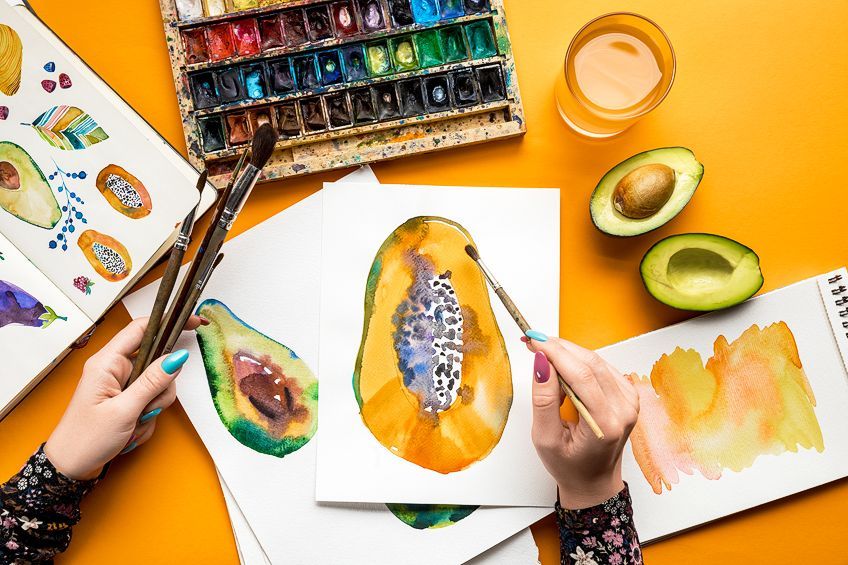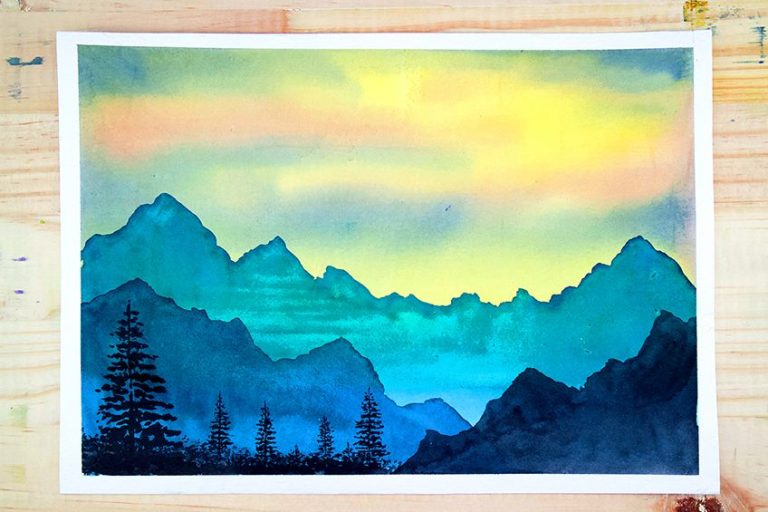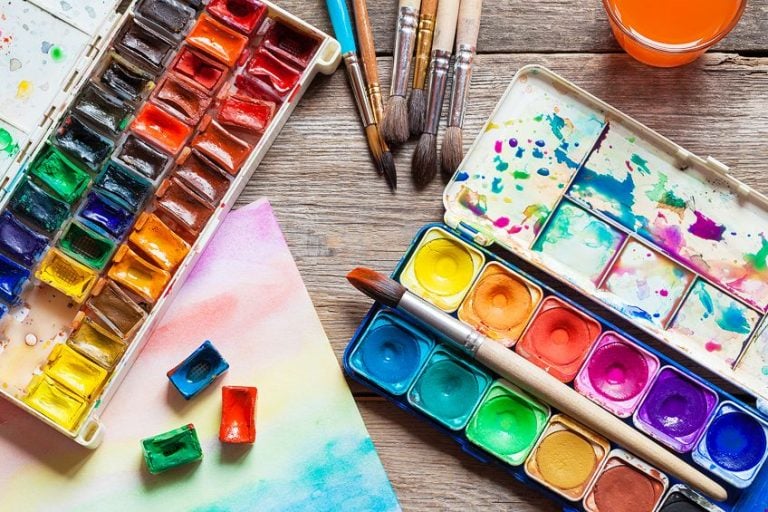Gouache vs. Acrylic – Opaque Water-Based Paints Comparison
Whether you are new to the world of painting or if you have a bit of experience with a few types of paints, you might wonder whether acrylic paint or gouache paint is better. Both paints are very popular and both have unique qualities that make them the preference of different artists at any given time. Whether you prefer gouache over acrylic will depend on your style and technique as well as where and what you prefer to paint. Some people ask many questions such as, “What’s gouache paint?”, “Is gouache watercolor paint?”, or “What is gouache paint used for?” In this article, we discuss the difference between gouache and acrylic paint.
Table of Contents
- 1 What Is the Difference Between Gouache and Acrylic Paint?
- 1.1 The Durability of Gouache vs. Acrylic
- 1.2 The Binder in Gouache vs. Acrylic
- 1.3 The Consistency, Vibrancy, and Finish of Gouache vs. Acrylic
- 1.4 The Paintable Surfaces Available for Gouache vs. Acrylic
- 1.5 The Drying Time of Gouache vs. Acrylic
- 1.6 Color Shifting in Gouache vs. Acrylic
- 1.7 Rewetting and Reworking with Gouache vs. Acrylic
- 1.8 Display Options for Gouache vs. Acrylic Artworks
- 2 Is Gouache Paint or Acrylic Paint Better?
- 3 Frequently Asked Questions
What Is the Difference Between Gouache and Acrylic Paint?
Acrylic and gouache paints are both water-based. This means that they can easily be cleaned using soap and water. That is about where the similarities end when discussing the qualities of gouache vs. acrylic. From consistency to finish or durability to blending ability, gouache and acrylic have very little else in common aside from their ease of use and their popularity.
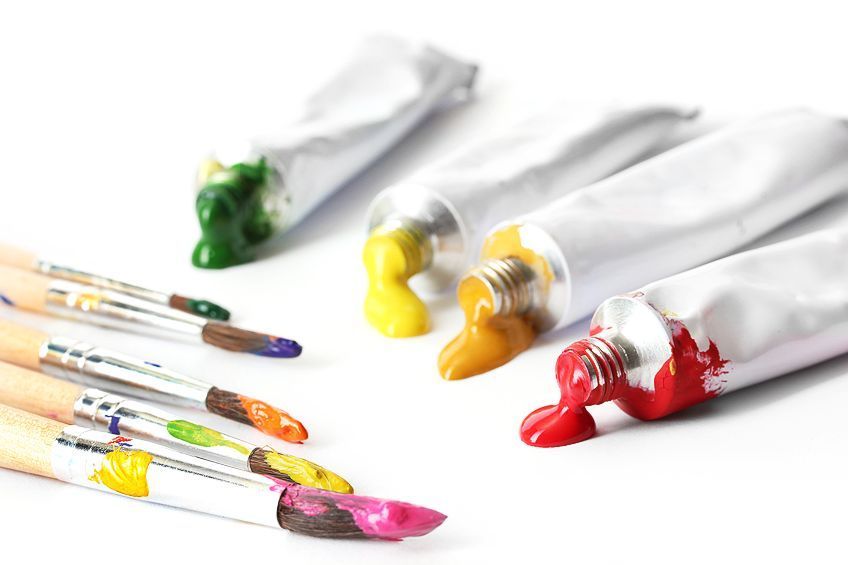
The Durability of Gouache vs. Acrylic
As we’ve just mentioned, acrylic paint becomes waterproof once dry while gouache does not. This means that acrylic paint is already more durable than gouache in the face of moisture. Acrylic paint is also more resistant to dust and ultraviolet light from the sun than gouache paint is. What this means is that acrylic paintings can be easier to display as they do not require as many precautionary measures.
Gouache artworks, on the other hand, may need to be framed in order to be put on display without the risk of getting damaged.
The Binder in Gouache vs. Acrylic
Binder holds the pigment in paint together and allows the pigment to hold onto surfaces such as paper or canvas. The main difference between gouache and acrylic paint is that they have different binders. Perhaps you have heard of acrylic paint but have never heard about gouache. If you are asking yourself “what’s gouache paint?”, the answer is that it is water-based paint with a binder that allows it to stay water-soluble even once it has dried.
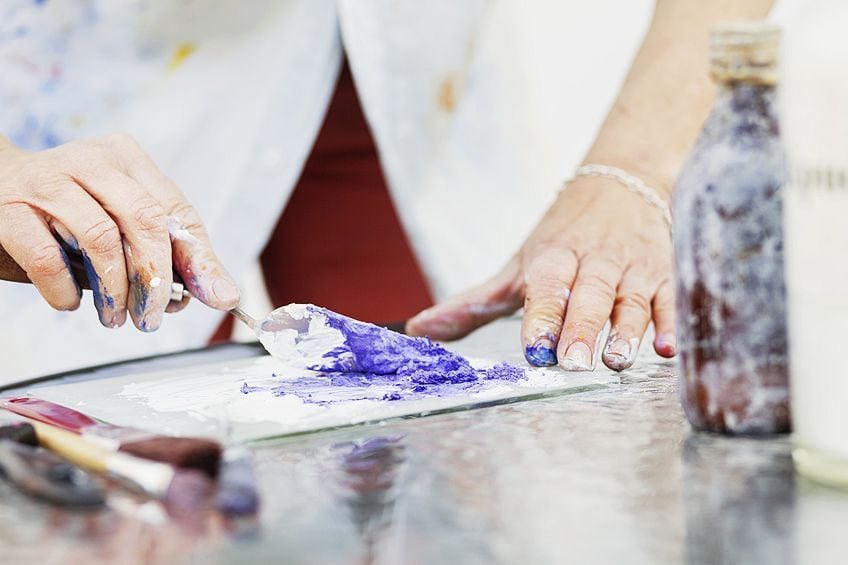
The binder in gouache is gum arabic. On the other hand, the binder in acrylic paint is an acrylic polymer. Gum arabic is what allows gouache to retain its water solubility even after the paint or artwork has dried. On the other hand, the acrylic polymer is a type of plastic and thus allows acrylic paint to dry to become waterproof.
The Consistency, Vibrancy, and Finish of Gouache vs. Acrylic
Acrylic paint dries to a finish that is shinier, more opaque, and brighter than gouache paint. Gouache dries to a soft, flat, matte finish that may appear duller in comparison. Gouache is still more vibrant than watercolor paints, however. It is because of this that gouache cannot be watered down to look translucent in the same way that watercolor paints can. If you want to create texture on your paintings then you should choose acrylic paints.
Acrylics have a variety of different consistencies available that can help you create texture.
Heavy bodied acrylics are the most commonly used to create texture with the paint itself, but you could also buy acrylics that have sand or beads added if you want something a little grittier. There are even fluid acrylics and acrylic inks available that allow you to mimic the effects of watercolor while still using acrylic paint. While acrylics can be thickly applied to your artwork without any complications, gouache must be applied in thin layers. If you apply gouache in layers that are too thick, then the paint will begin to crack as it dries. Gouache has a pasty but thin consistency that can be further thinned out with water to suit each artist’s needs or preferences.
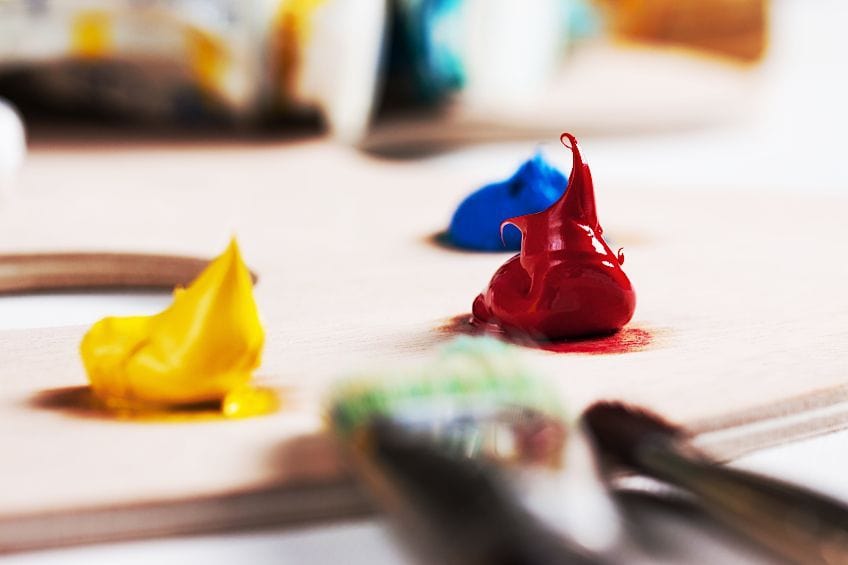
Gouache paintings are smooth and do not have any texture aside from the texture of the paper or illustration board it is painted on. When considering gouache vs. acrylic, the most striking difference is the consistency. If you are wondering what this means about how to use gouache, then you just need to know that it is similar to working with watercolor paints. In other words, when working with gouache you are limited to using paintbrushes, while with acrylics you can use something like a palette knife to create large peaks or texture on your artwork.
The Paintable Surfaces Available for Gouache vs. Acrylic
When it comes to gouache vs. acrylic, another thing to consider is the medium you would like to be able to paint on. If you have ever wondered “what is gouache paint used for?”, then we are here to tell you that gouache cannot be used on materials like fabric, plastic, metal, or glass. Ideally, gouache is best suited for use on watercolor paper, watercolor canvas, or illustration board. Acrylic, on the other hand, can be used on wood, fabric, glass, plastic, metal, canvas, paper, and more.
If the surface is properly cleaned and primed beforehand, then acrylic paint can very likely be applied without any issues.
The Drying Time of Gouache vs. Acrylic
When learning how to use gouache paints you will notice that they can dry surprisingly fast. This isn’t a problem, however, because you can reactivate the paint with water and continue blending or fixing mistakes even once the gouache has dried. Acrylics on the other hand, dry even faster than gouache paints and cannot be reactivated once they have dried. This means that to prevent your painting from drying too soon you will have to work quickly or mist down your painting with water. You could also add a retarder to your acrylic paint to slow down the drying process.

Color Shifting in Gouache vs. Acrylic
All paints will shift in color to some degree as they dry. What this means is that the color changes its value somewhat once it dries out. Darker colors may appear darker when this happens. As you become more experienced with painting, you will know which colors shift more or less than others. Acrylics will tend to have more of a color shift than gouache paints will.
Keep in mind that the effect is subtle, and it is something you will adapt to working with as time passes.
Rewetting and Reworking with Gouache vs. Acrylic
We already discussed the fast-drying nature of acrylics earlier in the article. One of the consequences of this is that acrylics can be harder to blend if you do not work quickly enough. Since acrylics cannot be reactivated with water once they have dried out, you will need to paint over the area to fix mistakes or continue blending. If you need more time to work with your wet acrylics you could add a retarder to slow down the drying process. Alternatively, you could lightly mist down the area to keep it from drying out.

Factors such as ambient air temperature and humidity can affect the drying time of your acrylic paint, as well as the brand of paint and how thickly you apply it. If you make any mistakes with acrylic, you will correct them by simply painting over them once they have dried. In this way, the qualities of a type of paint can be either positive or negative depending on how you prefer to paint. The fast drying time of acrylic is good for artists that work quickly, or who enjoy layering their paint onto their piece.
Gouache, on the other hand, is easy to blend and creates soft edges. Artists who prefer gouache like it because it is a very flexible painting medium to work with.
Since you can reactivate gouache with water, it is very easy to rework your painting or to correct mistakes. You can lift gouache paint to correct mistakes by adding water with a brush and dabbing the area with a cloth or paper towel. This will lift the color off of your paper so that you can repaint the area. This means that there is no need to rush when working with gouache and that mistakes are very easy to correct. It does also mean, however, that it will be harder to layer your paint. This is because when adding new layers, it is tricky to not reactivate the layers beneath and cause unintentional bleeding or lifting.
Display Options for Gouache vs. Acrylic Artworks
Gouache paintings should ideally be framed behind glass once they are completed. This protects them from water damage and excessive exposure to dust or sunlight. Moisture can reactivate the paint and cause fading, bleeding, or streaking on gouache artworks. Most artists will not seal their gouache painting with a varnish because it alters the colors and finish of their piece.
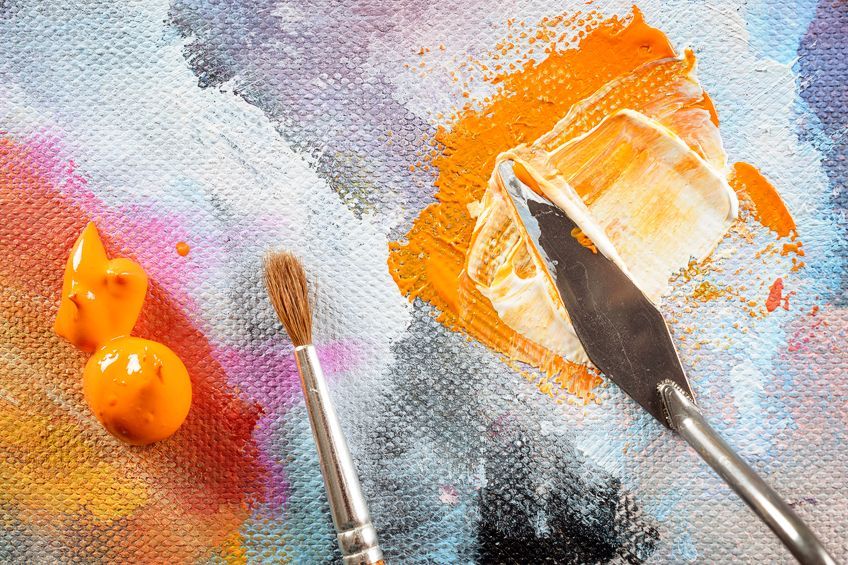
Acrylic paintings, on the other hand, are a bit more versatile with regards to how they can be displayed. You can easily varnish acrylic painting without much difference to the colors or finish. Acrylic paint is water-resistant once it has dried, so the protective glass is not necessary. Varnish helps to prolong the longevity of your piece but isn’t absolutely necessary either. If you have painted acrylic on fabric, wood, or something less traditional than canvas then you should take appropriate measures to seal your work. If you have painted acrylic on paper then you should still consider framing it, as the paper is quite delicate.
| Acrylic Paint | Gouache Paint | |
| Binder Used | Acrylic Polymer | Gum Arabic |
| Durability | Durable Water-resistant when dry, UV resistant, dust resistant | Not very durable Not UV resistant, water-resistant, or dust resistant |
| Water Soluble when Wet | ✔ | ✔ |
| Water Soluble when Dry | ✘ | ✔ |
| Texture | Different textures available | Not textured Texture comes from the medium painted on |
| Prone to Cracking | ✘ | ✔ |
| Finish | Different finishes available Most common are glossy or satin | Matte |
| Price | Slightly more expensive than gouache | Affordable |
| Consistency | Different consistencies available from thick to thin | Pasty but thin Can be thinned further with the addition of water |
| Vibrancy | More vibrant | Less vibrant |
| Painting Tools Available for Use | Paintbrushes and palette knives | Paintbrushes |
| Surfaces Available for Painting | Wood, metal, plastic, canvas, paper, stone, and fabric | Watercolor paper, watercolor canvas, or illustration board |
| Color Shifting | ✔ | ✔ |
| Opacity | More opaque than gouache | Less opaque than acrylic but more opaque than watercolor |
| Blending | Quite easy, but you will need to work quickly or keep the paint wet | Very easy, no need to rush as paint can be reactivated |
| Layering Ability | Very easy | Tricky to get right |
| Odor | Usually odorless | Usually odorless |
| Drying time | Fast | Fast |
| Display Options | Can be varnished, framed, or hung up with ease | Should be framed with protective glass Varnishing is not suggested |
Is Gouache Paint or Acrylic Paint Better?
Gouache and acrylic paint have very different qualities that make them unique. Whether those qualities are good or bad will depend on the way you prefer to paint or what you are looking for in your paint choice. Both mediums are very easy to work with once you get used to the techniques they require. Acrylics are great for artists who like to layer with ease and can work quite quickly. They also provide a lot of variety in terms of where they can be used, as well as the finishes and textures available.
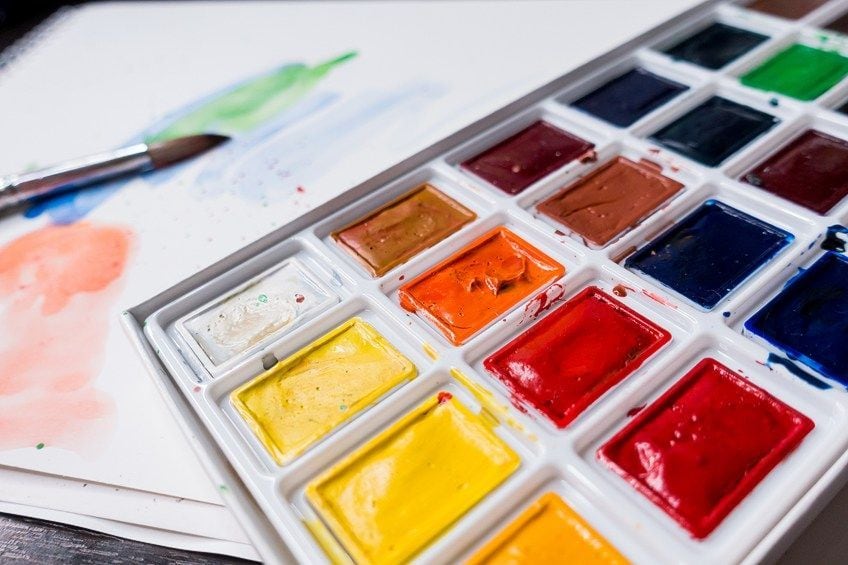
Gouache is good for artists who want to create soft edges and subtle blends with ease. Artists who prefer gouache don’t mind having their works only dry to a soft, matte finish. Gouache artworks are also very delicate and prone to water damage but are perfect for artists who don’t want to have to worry about hurrying or having paint dry out. If you prefer working with layers you may have some difficulty in learning how to layer with gouache without lifting the previous layers. If using gouache, you will also be limited to working on more traditional surfaces such as watercolor paper or illustration boards.
Neither medium is inherently better or worse than the other, so it could be worth your time to try them both out and see which you prefer. It could surprise you that you prefer one that you didn’t think you would. Both paints have their strengths and you could use them accordingly or you could discover a method and medium you love and dedicate all your time to it. Have fun with learning and experimenting. Even if you do settle on only using one, the experience of working with other mediums will always be beneficial!
Frequently Asked Questions
What’s Gouache Paint?
A lot of people ask “is gouache water paint?” The answer is that gouache is different from watercolor as it is more opaque and it dries faster. Gouache is very closely related to watercolor paint but is more pigmented and easier to control than watercolor paints are.
What Is Gouache Paint Used For?
Gouache is used by illustrators to make artwork for posters, illustrations, comics, and more. Artists use gouache to do portraits, landscapes, abstract art, and anything else they can imagine. It is a reliable and easy-to-use medium that allows for the easy correction of mistakes.
How to Use Gouache?
Gouache is used in a similar way to watercolor paints. You simply mix the gouache with some water to get the desired opacity and begin painting. Experiment with techniques such as lifting, blending or creating blooms. If you have experience with watercolor painting then you basically already know how to use gouache.
Is Gouache Watercolor Paint?
Gouache has almost the same composition as watercolor paint, only it contains more pigment and dries faster. This means that gouache is more predictable and can be a bit easier to work with but doesn’t give quite the same effect as watercolor. Even if you water down gouache quite a lot, it will not look exactly like watercolors do.
Can Gouache Be Used With Acrylic?
If you mix gouache with acrylic paint, you are essentially making acrylic gouache. What this means is that you will make your gouache waterproof like acrylic while still having the paint look more like gouache does. Mixing in this way can have unpredictable results so you may want to consider just buying some acrylic gouache if you want the look and finish of gouache with the layering abilities of acrylic.
What Is Acrylic Gouache?
If you are wondering “what is acrylic gouache?”, just think of it as acrylic paint that looks more like gouache. It dries to a matte finish in the same way that traditional gouache does, but is not water-soluble once dry. This means you can no longer lift and blend without time or drying constraints, but you can now layer with ease and still have the effect of traditional gouache. Acrylic gouache is just acrylic paint that performs closer to gouache.

Demi Bucklow is an independent artist and photographer living in Cape Town, South Africa. Since graduating from the University of Cape Town in 2018 from Michaelis School of Fine Art with a degree specializing in fine art photography, she currently works as a freelance artist, content creator and writer. Demi’s particular interests explore a range of multimedia illustration, collage art, photography and videography, darkroom processing and stop-motion animation. Her work is an exploration of nature and its phenomenon – somewhere between art and space.
Artistic practice presents the ability to communicate a vision. It is through techniques of pointillism and realism that form, and substance are explored as a metaphor for matter; super-imposing a thousand marks and points until an image is formed before our eyes. From illustrations to surrealist landscapes, Demi translates corporeality – mixing the obtuse and vacuous with the astute and expressive which leads to a mixture of irrevocable pondering over what is and what could be.
Learn more about the Art in Context Team.


